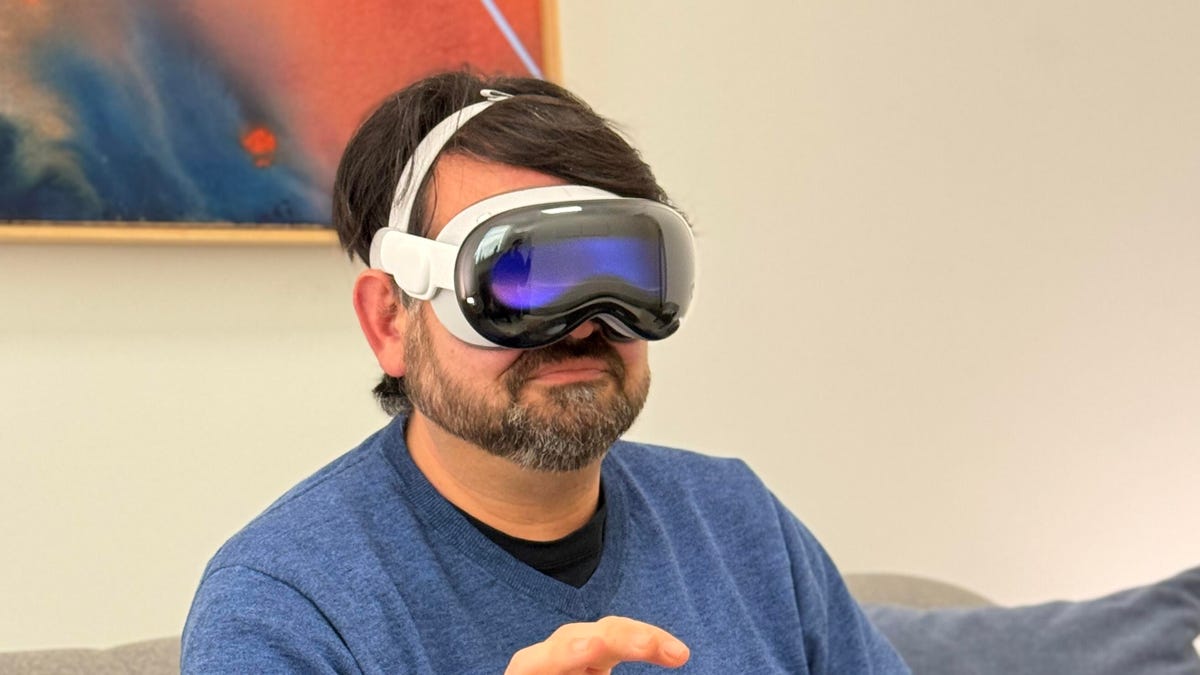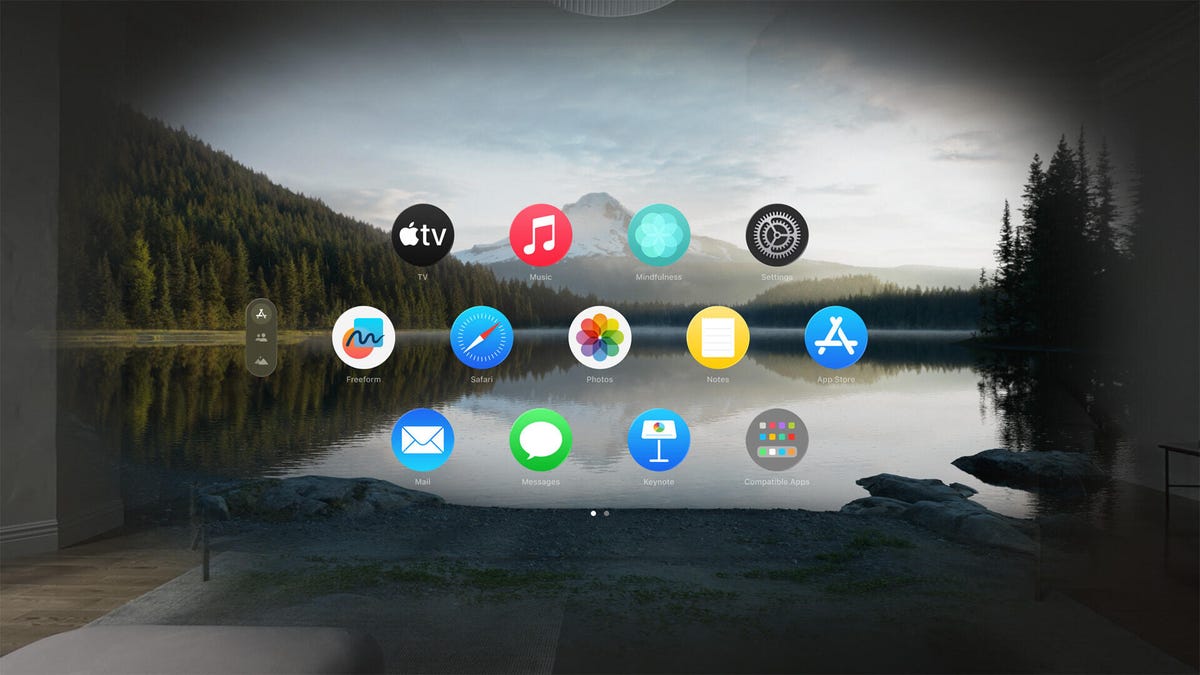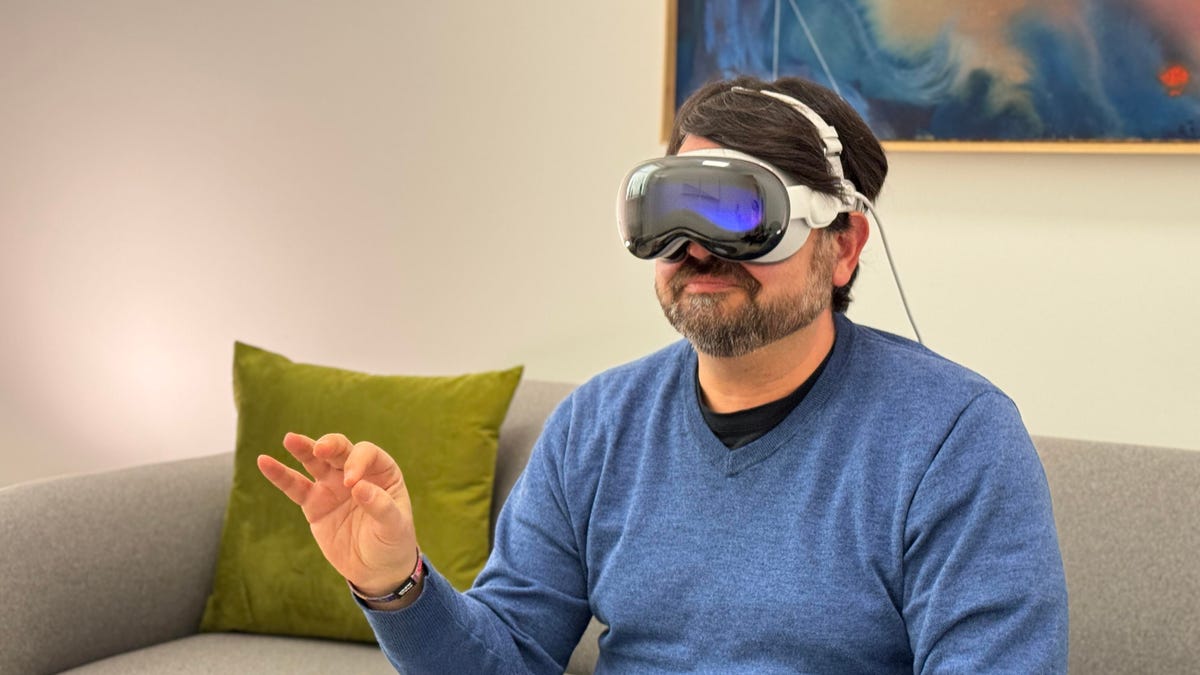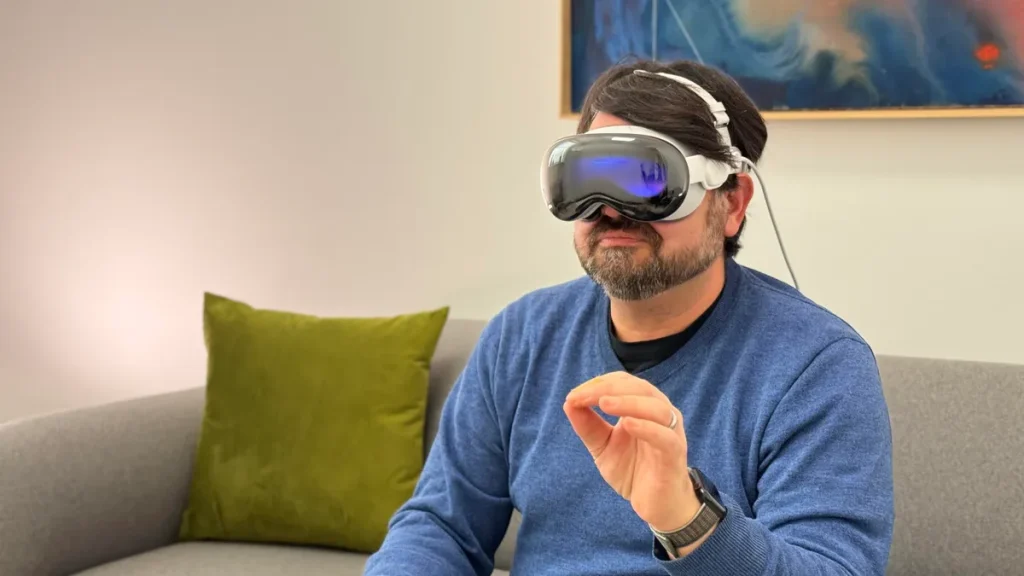At some point, I’m going to live inside the Apple Vision Pro: doing work in it, checking messages, playing games, watching shows. Apple’s $3,499 mixed reality headset aims to be the computer of the future, but I don’t know if it will be my computer of the present. In the meantime, I’ve had demos to give me a feel for where Apple is going. My latest one, days before the headset becomes available to order, was my deepest dive yet, even though it was still a limited taste. Still, it’s clearer than ever that Apple isn’t going for the exact same thing as previous VR headsets or even AR ones. It’s flaunting different functions. Where its advantages and missing pieces lie is what fascinates me, as someone who’s used headgear for over a decade now.
If you’re considering getting an Apple Vision Pro, here’s what you need to know based on my short demo experiences with Apple, maybe 30 minutes each. I haven’t fully reviewed one yet. But I’ve used it enough to know that, out of the gate, the Vision Pro is a product you can wait on (for most people, because of its cost alone, it will be), but it has moments that definitely shine. And sometimes get weird.

Fit thoughts
Putting it on for a fourth (!) time, I was aware of different things. The passthrough view is really good but not crystal clear eyesight-level good. I thought maybe my lenses were smudged for a moment. The field of view is limited, similar to other VR headsets. Also, adjusting the headset to get the right fit takes some work.
There are two head straps Apple includes with the Vision Pro. One, an iconic-looking ribbed Solo Knit band, has no top support and makes the front of the Vision Pro feel a bit top-heavy. I chose the Dual Loop band, which I hadn’t tried before, and it really improved balance. This over-the-head strap kept the weight more evenly distributed. It’s not a surprise to me, since the same thing’s true of other similarly sized headsets like the Meta Quest 3.
I think Apple designed the simpler band to be easier to take on and off, so that might factor in on which one people use. The bands seemed to pop on and off easily, and I adjusted the fit on the Dual Loop with Velcro straps while holding the front metal-and-glass Vision Pro in place. I’d be fine in this headset with this strap on for a good long while, I think, but I’m used to wearing all sorts of VR headgear. I don’t think the fit’s significantly better or worse than the Meta Quest 3.

Read more: Apple’s Vision Pro Extras Could Push Your Total Cost Over $4,000
That display
Again and again, I’ve come to appreciate the Vision Pro display. That’s the real star here. Apple knows it. My demo showed me more photos and spatial videos again, along with video clips: a trailer for Ted Lasso (which I watched while in a 3D immersive environment of a volcanic landscape as my backdrop), and a Star Wars trailer I watched in Disney’s Vision Pro-optimized Disney Plus app. It had an immersive environment that looked like I was in a speeder on Tatooine. It made me feel like I was in a Disney-ified Star Wars drive-in experience.
The micro-OLED display is high-res and rich enough to make movies look stunning. Yes, this could be a personal cinema that may rival whatever setup you already have. Spending $3,499 for a personal cinema seems incredibly indulgent, but some will see the appeal. I’m in love with the idea of seeing movies in it, for sure. The audio also sounds pretty good with the included speakers in the headset, but I’m curious what lossless AirPods Pro 2 buds will do for immersion.

I tried a 3D app called Jigspace that also shows off how high-fidelity 3D models can look. Jigspace already exists on iOS and is ARKit supported, but I dropped a life-size F1 race car into my demo room and it looked absolutely stellar. The experience reminded me of dropping car models into the real world on the Varjo XR-3 headset, except here I had a standalone headset that was doing it with no PC at all (the Varjo requires one). I got up and walked around the model, tapping with my fingers to move a wheel off or examine an engine part, and it felt like I was in a living museum. It was so good it almost felt like I might trip over the car parts.
Multitasking galore, with a keyboard and Siri
Technically, there are no limits to how many apps can be open simultaneously on the Vision Pro headset — at least, from what I’ve been told. That quality makes the Vision Pro totally unique compared with any other VR (or AR) headset. I’ve only tried having three apps open at once, and they were more basic 2D “flat” apps: Safari, a demo version of a menu app, Yummly and Photos. I dragged them around by glancing at a menu bar on the bottom of windows and using my fingers to shift them around or glancing at corners of the windows to expand them.
There are all sorts of intriguing possibilities for how multitasking could evolve, especially for apps that have immersive 3D elements. Apple seems to be keeping the navigation elements universal: glancing at things and pinching and moving fingers to interact.
Siri comes into play here too. I invoked Siri to close all app windows or to launch an app. I also found voice dictation in Safari, where I glanced up at a microphone icon in the search bar that auto-activates and allows me to speak something to search for (CNET’s website, of course, where I browsed my own article on the future of VR and AR).
Apple has a pop-up keyboard in the Vision Pro, but it floats in the air where you either have to tap your fingers at the keys one by one like you’re at an ATM (similar to how Meta uses keyboards on the Quest), or you can glance at keys with eye tracking and simply tap your fingers to “click.” It’s not ideal, and Siri seems faster as an input option, but you could also pair a Bluetooth keyboard which I didn’t get to try. No one’s cracked true virtual typing in VR/AR yet, and neither has Apple.
How easily you can swap back and forth and do multiple things, well, I can’t fully tell. But that’s what could make the Vision Pro stand in a different territory than anything else.

Hand-eye coordination is generally great
Apple’s blend of eye tracking and small-gesture hand tracking feels far more refined than headsets like the Meta Quest 2 and 3 use or the Hololens 2. The tiny gestures, combined with quick eye movements to focus on buttons or other things to click and drag, can feel like mind reading. Sometimes it’s not perfect: I found I had to look at places several times occasionally or slightly turn my head. Maybe it’s me getting used to the interface or eye-tracking adjustment.
But after four times in Vision Pro now, I’m impressed that this is the most effortless and functional hand-tracking system I’ve ever seen in VR or AR. I forget there are no controllers. Will I miss not having them? Sure, sometimes. It’s wild when I see my own hands via passthrough in Disney’s immersive Tatooine environment, vignetted so they look like they’re in the world with me. I almost thought they were virtual hands.
There are some interaction tricks that surprised me. The Digital Crown on the Vision Pro headset, which dials virtual environments in and out of existence, also adjusts volume. All I had to do was glance at one of two icons while twisting the dial to pick its function. My eyes literally changed reality.

EyeSight: so uncanny
I finally got a glimpse of EyeSight, which is Apple’s outer display that seems to show your own eyes to others like the headset is see-through. I walked into a room where someone else had a Vision Pro already on, and I talked to him and looked at his almost-real eyes. The Vision Pro scans your face to make a virtual Persona for FaceTime chats and uses those eyes in the EyeSight display in place of your real ones. They blink when you blink, and apparently smize a bit when you smile. They look around. Is the effect like animatronics or real? It felt somewhere in between. The display seemed to have depth like I was looking through to the eyes. I don’t know how I feel about it, but it did let me have eye contact, in a sense.
More to come
This isn’t a review. I’ll be reviewing the Vision Pro at some point. I still haven’t used the headset outside of a controlled demo room. But until I do, this is another glimpse at what’s to come, helping give you a better idea of what the Vision Pro is and isn’t. We won’t really know what this headset can do until more apps arrive and we know how VisionOS evolves. But if you’re really dying to have a taste of Apple’s immersive future now at any price, it’s here… if you can afford it.
